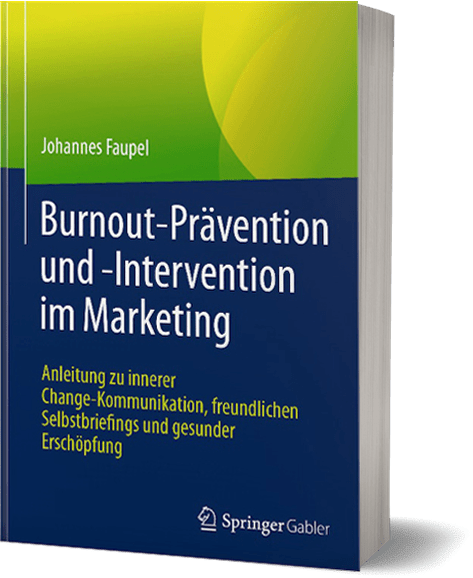How To Overcome Depression By Self-Help
When overcoming depression, many think of long psychotherapy, often combined with intensive drug therapy.
- There are situations in which psychotherapy is a blessing.
- But you don’t always get a therapy straight away. Is there an alternative way to cope with depressive feelings before psychotherapy?
- Self-help without asking anybody for assistance is always far better than doing nothing at all.
- With the build-and-climb-a-ladder technique, you can start right away to step out of depression.
Depression: Why is it important to take action in tiny steps?
The main problem with depression is the illusion of being helpless. Again and again, the mind goes through the process of this self-fulfilling prophecy.
Everything seems too hard.
Nothing seems to get done.
Even more: depressed people talk about not even having the strength to get out of bed.
Therefore: The small step is a big step for a depressed person. Otherwise, there is no step at all.
What to do to change the depressive state?
Staying in bed? Bad idea. Nothing will improve.
Starting with power sports? Maybe not now.
So there could be something in between of bed and sports.
What inner pictures does the depressed mind work with all the time?
First, we should better understand what the depressed mind is constantly confronted with.
Let’s see what is happening in the depressive mind:
What do depressed people do almost all the time?
Depressed people imagine their world as gray or black. No sun in the soul. No hope. No feelings.
- More than that, a depressed person is convinced by the idea that there is no hope and no future.
- So depressed people are strong in their imagination. Proof:
- The idea of being helpless leads to helplessness. In a painful way, depressed people are “successful” with their imagination work.
- The cycle of negative thoughts has a great impact on life.
And: - The cycle of good experiences has a great influence on life.
- For the so-called subconscious mind, it does not matter whether you feed your mind with black or colorful thoughts.
If you have nothing to lose, you can start “risking” a benefit
Your mind is able to produce a depressive mood. Would you invite him to build something else?
It’s all about pictures and preconceptions.
If a person is “caught in the prison of helpless” (attention: this is a strong picture!), she or he sees maybe walls of limitation. Maybe the wall the person looks at from bed, is the prison itself.
Now, let’s change the scene. It is all about changing a picture. Not more.
If the person thinks about leaving “the prison of helpless”, there might be a picture of a place outside this prison.
That means: There might be some reasonable good picture of a good future.
Stay in bed. No problem, if you start drawing a picture of a scene outside the bed.
If you decide to physically stay in your bed for today – ok.
Take a piece of paper and a pencil.
Draw or write scenes about “What I will do after the depressive episode or between one and another depressive day? How can I take one day holiday from depression?”
Where the ladder-self-help technique comes from
In many years of systemic therapy in my practice in Frankfurt, one method has proven to be particularly effective.
Learn more about my concept, “I will climb a ladder to step out of depression.”
This depression overcoming technique consists of 3 parts
1) Accepting the feeling of deep sadness for the moment – and refraining from using the word illness (even though depressive episodes can feel very sick).
2) Visualizing the burdens that weigh on the person. This is critical to finding a sense of the magnitude of the burdens. With an appropriate assessment of one’s burdens, self-acceptance increases.
3) Starting an exercise program, the “Build-And-Climb-Ladder-Technique”.
Taken together, these three simple steps can work to help a person climb a self-built ladder out of depression. That is the goal.
“I will build and climb a ladder to get out of depression”
Tell yourself a story about leaving depression that you make true
- I will climb a ladder.
- Before that, I will build this ladder.
- Even before that, I accept that I am standing in the shadow right now. (How to accept this? Check-out “The world’s fastest Anti-Depression-Book”)
- Over this ladder, I will go from the shadow of the present moment into the daylight of my life.
- I decide to accept light as a part of my life.
- I build this ladder myself mentally and through small, real steps from today on.
- I can build a part of the ladder today. I can also finish it. That is what this day shows. What I create, I create.
- The material for the stiles of the ladder are the hours of today.
- The rungs of my ladder I make from small steps and activities.
- I accept for today that I am taking small and tiny steps. These steps are the rungs for my ladder:
Examples for manufacturing the rungs of my self-help-ladder:
- I carry the garbage to the trash can. This is already a very stable rung of the ladder. Next:
- I mop in my kitchen.
- I prepare something to eat for myself.
- I call a friend, and thank him for something (without complaining about my situation).
- I call the nearest nursing home and ask if I can read something to an old person: This equates to at least three solid rungs on my ladder.
- If the nearest nursing home is too far away, I offer a video reading session.
- I call the animal shelter and ask if I can walk a dog.
- I check in with a person I’ve been meaning to contact.
- In between, I sit down and give myself a hug. I speak out loud: Thank myself for being patient this day.
- I keep imagining that with each small step comes a new rung in my ladder.
- It is the ladder that leads me from the present moment to the light of my life. I can sense and feel this light, but at the moment I am still standing a bit apart from this, my light.
- Even if I need more than today for the construction of my ladder:
- I build it faithfully and patiently until it is stable and high enough so that I have an overview of my life again.
- Mentally, I can already climb on this ladder before it is finished.
Again and again, already during the construction of my ladder, I can climb out of the shadow of the current moment over the visualized ladder into the light and enjoy the light for a moment or two (or even longer, nobody blames me if I have been a little longer now stay in the light, it’s free, and it’s my light anyway). I repeat this so often until I feel more light than shadow in my heart and mind.
Conclusion
Do something.
How long does it take to treat depression?
People often ask: How long does it take to treat depression?
Depression is known as a serious mental illness.
That can be debilitating for those who suffer from it.
Therefore, it’s for many people crucial to ask how long depression treatment takes.
Patients want to plan accordingly and find the best solution for their situation.
The problem is: There are many types of treatments available. But nobody knows what works in which case.
List of common depression treatments:
- SSRI antidepressant medications
- Talk therapy
- Counseling
- Hypnotherapy
- Exercise and diet regimen
- Self-help groups
Each individual’s situation is unique.
So it may be necessary to test before finding the best solution.
Sounds unpleasant?
How can someone say that I have to experiment with my mental health?
So, let me ask you some other questions:
- How would you find out what works for you? If running sport should work, you’ll find out only by: running.
- If better nutrition in addition to other treatment methods should work for you, you’ll find it out only by: changing food habits.
Right. - Would you agree to start working with a method to overcome depression step by step, but without permanent major help of the outside?
- If so, you can start with you life treatment (not: depression treatment) right now.
- Be conscious of one important fact: The outer world never will live your life. It also cannot improve it dramatically.
- The person who may – and will – improve your life is: you.
- If there is a medication, you have to take it and to believe that it will help you. Otherwise, it won’t.
- If you’re going to talk therapy or hypnotherapy, you have to have a very clear picture of what you want to achieve – not what you want to get rid of.
How to stop depression
The question “How to stop depression” is not that easy to answer.
To stop a depression would mean to erase it somehow.0
I am considering asking another question.
What would be the effect if instead of “stop depression” you could allow the idea of “pause depression for hours”?
The problem with concepts like “get rid of”, “stop”, or “combat”: People are very likely to program their next defeat.
It is an unrealistic idea to turn off depression.
Pharmacologically, one could sedate a person to the point that he or she would not perceive any mental pain.
But: Is that a life?
Let us first turn to the general recommendations that psychologists and pharmacologists make:
The usual recommendations on how to end depression
Depression can be a serious problem for many people. It’s not something that just goes away, and it can take over your life if you let it. It’s important to find ways to feel better and stop the cycle of depression before it takes its toll on your mental health. In this text, we discuss some different alternatives to stopping a depression.
Key Points:
-
- Usual Recommendation: If you’re feeling depressed, talk to your doctor about getting evaluated for depression. Depression is a real medical condition and should not be dismissed as just being “in the mind.”
- Usual Recommendation: There are many types of medication that can help with symptoms of depression, such as SSRIs or SNRIs. They work by changing how your brain sends and receives messages.
The whole article by Jeffrey R Lacasse and Jonathan Leo is available here
“Contemporary neuroscience research has failed to confirm any serotonergic lesion in any mental disorder, and has in fact provided significant counterevidence to the explanation of a simple neurotransmitter deficiency. Modern neuroscience has instead shown that the brain is vastly complex and poorly understood [11]. While neuroscience is a rapidly advancing field, to propose that researchers can objectively identify a “chemical imbalance” at the molecular level is not compatible with the extant science. In fact, there is no scientifically established ideal “chemical balance” of serotonin, let alone an identifiable pathological imbalance. To equate the impressive recent achievements of neuroscience with support for the serotonin hypothesis is a mistake.”
- Usual Recommendation: Behavioral therapy can be a great way to address the root of any problems that may have caused depression in the first place, such as grief or low self-esteem.
- Usual Recommendation: Mindfulness is also an excellent form of behavioral therapy which teaches you ways to become more aware of what’s happening in the present moment, rather than what’s happening by comparing things to experiences or worrying about what might happen.
- Usual Recommendation: Talking therapy can be a great option for those who want something less intensive with fewer side effects and still have an impact on your depression symptoms.
Conclusion to all these recommendations on how to stop depression:
The assumption that prolonged depression is always depression – and that every depression can only be “conquered” with the classic therapies – leads to a dilemma:
Many people feel ill – even terminally ill or out of treatment – because they follow a popular opinion.
Allen Frances, MD, in his book “Saving Normal: An Insider’s Revolt against Out-of-Control Psychiatric Diagnosis, DSM-5, Big Pharma, and the Medicalization of Ordinary Life,” has pointed out that not all sadness and all forms of prolonged withdrawal need be the sign of depression
It is especially important to be creative when dealing with a symptom as individual as depressive symptoms.
Coping with depression
A guide to more normality, even if there are periods of sadness
Coping with depression involves the ability to accept that there are times of sadness.
It is also important to remember what it was like before and how much better life can be when one feels happy or at least not depressed any longer.
There needs to be a change in thought because, even though the person cannot currently see an end result, they can see the light at the end of a tunnel.
Coping with depression isn’t hard work. On the contrary! It’s possible to do so by accepting that there are times when one feels sad.
The point is not to define sadness as a disease.
What has worked in the past can be tried again now because no matter how bad things may seem now they will get better.
Persons who are battling depression need to remember that there is always the potential for change, and they can be happy again. It’s important not to give up, but rather fight back with all of one’s might until happiness returns.
Why you never should battle against yourself:
Fighting against oneself is never a good idea.
It’s not like one needs to be perfect in order for life to be worth living; it just means that while there are troubles, we need to find solutions and ways of coping with them.
To fight against depression may mean denying feelings or thinking the person would feel better if they were always happy.
This will not work. First, a depression is nothing to get painted in pink colors.
it’s just going to get worse with time.
It becomes even more difficult when one feels bad about themselves for feeling down or they think that if they were in fact happy all the time then life would be worth living. In reality, it doesn’t matter what state of mind a person is in because life is worth living no matter the circumstances.

 When overcoming depression, many think of long psychotherapy, often combined with intensive drug therapy.
When overcoming depression, many think of long psychotherapy, often combined with intensive drug therapy.

